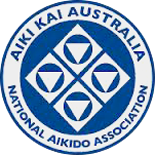Submitted by: Geoff Freeman
This question was asked during dinner one evening at the 2017 Belgian Summer School. I had not given the question much thought before I was asked, so I have since.
Basic aikido practice is commonly a set of known exercises (ikkyo etc.) done by two people, with uke attacking nage. The pattern of training is that nage successfully defends them self and “defeats” uke. Usually we consider our aikido is improving if we get better at the nage part of the exercise. So, it follows that the role of uke is to help nage improve.
How can uke help nage improve? Firstly, by providing the correct attack. It is beyond the scope of this article to describe attacks in detail, but it should begin with the named attack (e.g. kata tori) and, importantly, should continue in a direction suitable for the technique being practised. For example, a (non-aikido) attacker can use kata tori for a variety of things. The attacker could grab the shoulder so they could push you backwards. They might equally use the grip to pull you forward and down to the ground. Perhaps it is used to hold you still while they punch or kick. Aikido has a response to any of these so, if the technique being practised is a response to being pushed from kata tori, then the “correct” attack is to push after gripping the shoulder. As well as this initial attack uke should be looking for opportunities for follow up attacks. The speed of attack should be appropriate for nage’s ability. Although difficult at slow speeds, uke’s balance should replicate the balance of a fast committed attack.Of course there is a large variation in athletic ability and experience of students, consequently their ability to offer a correct attack varies enormously. Students new to aikido commonly have no preconceived idea of what movement might be “correct” after the initial part and will usually provide an instinctive and natural response to nage’s movement. A common example is beginners doing a pirouette under their arm with shihonage. This movement may not be the expected (“correct”) response but is it still helping nage? Perhaps not for everyone but for an experienced nage it is an invaluable opportunity to practise responding to natural, possibly unexpected, movement. We get few chances to do this.
Beyond the beginner stage, I see two basic cases. If nage is more familiar with the exercise than I am then, as uke, I try to do the best initial attack that I can at a speed that I think nage can manage. Then I will try to follow nage’s movement looking for a further opportunity for a follow up attack. If nage does well I will, to quote Harvey Koningsberg, “get a nice ride”. I will also get a first hand look at how this nage executes the technique well. If nage seems quite comfortable then I try to offer a more challenging attack, maybe a bit faster, perhaps a bit slower or maybe just change the rhythm. My hope is that I am enabling nage to practise at their maximum capacity.
On the other hand, if nage is not familiar with the exercise, then uke needs to help. As uke I try to attack slowly enough to allow nage time to think and possibly to experiment. Importantly, I try to continue to move to places I believe I would go if I was following an experienced nage, but hopefully slowly enough to give nage time to adjust. My belief is that nage can then follow a correct path and hence learn good movement for the exercise. This usually allows both uke and nage to get useful training with very little verbal explanation.
So, as uke, I start with the intention of helping nage but, in doing so, what benefits are there for me? When I am training with an experienced nage and following their lead I can discover many things. For example, did I lose balance? How did nage manage this? Could I do the same? Could I find an opportunity for kaeshi waza? Also, because I get to train with a variety of partners I get to see a variety of methods and I can compare the effectiveness of each of them. Partners also vary in many ways, for example height and athleticism. If I am a responsive uke I can notice the adjustments which can help me handle such variations. It is also possible to discover things which are not particularly effective.
In short, I find the more I help nage practice the more I discover what is effective as nage. But what to do as nage is a different article.

